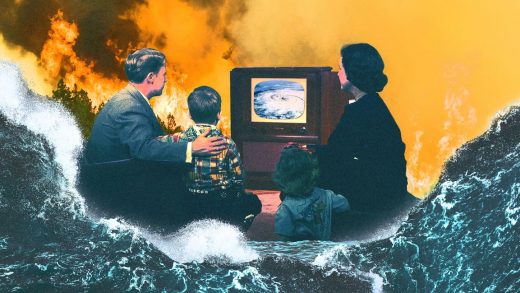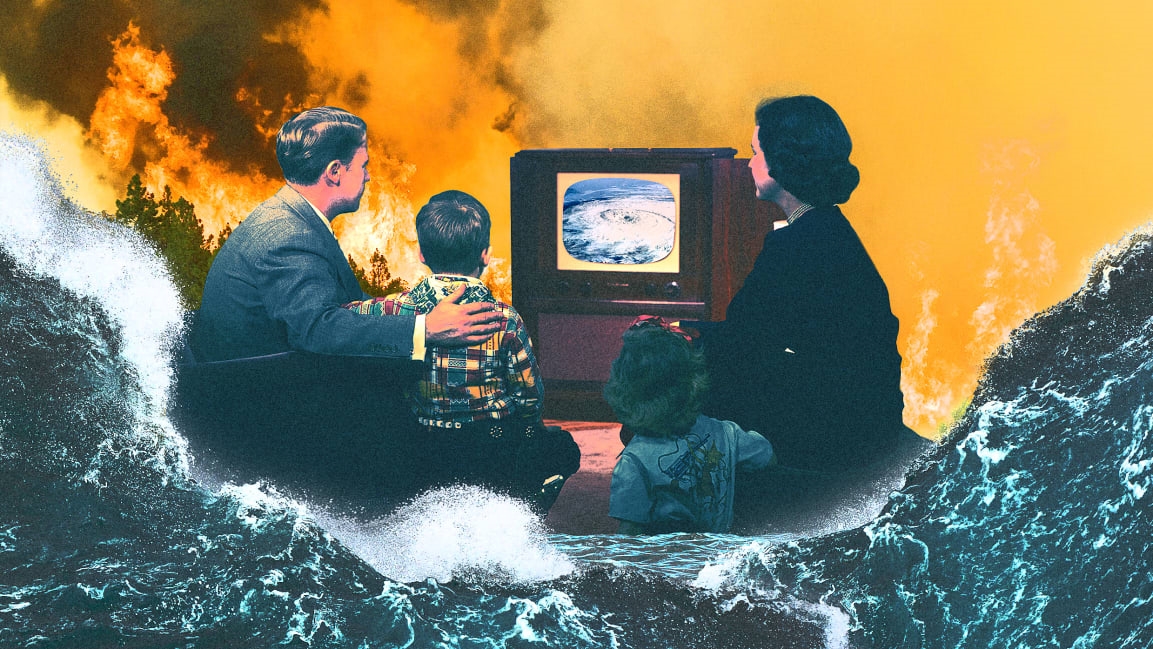How to talk to kids about climate change
That day, the United Nations’ Intergovernmental Panel on Climate Change (IPCC) released its latest climate report, a dire examination 0f how human activity has caused climate change and a warning that the window to avoid 1.5 degrees Celsius of warming—and the devastating impacts that come with crossing that threshold—is closing. Ardoin admitted to her daughter that she was feeling a bit down about the report, and the two talked about how climate news can feel overwhelming. But then they pivoted to some positives: How we have better tools now than ever to understand what’s happening, and how, if we take quick action, it’s not too late.
This probably isn’t what every parent talks about with their kids on the way to high school orientation. Ardoin is an environmental social scientist (her titles include faculty director of the Emmett Interdisciplinary Program in Environment and Resources in Stanford’s School of Earth, Energy, and Environmental Sciences, senior fellow in the Woods Institute for the Environment, associate professor in the Graduate School of Education, and head of a Social Ecology Lab that studies human–environment interactions); it’s something her daughter has grown up with.
But climate change is an avoidable topic between kids and their caregivers. Likely, kids—even young ones—aren’t completely in the dark. “Kids are incredibly perceptive,” Ardoin says. “Even the youngest children have a sense that things are shifting in the world around them.” Even if you’re not ready to break down the latest IPCC report with your children, there are ways you can talk to them about what’s going on, and ease the climate anxiety they may have.
Get outside
Melissa Burt is an atmospheric scientist at Colorado State University whose research focuses on the Arctic. She’s also a member of Science Moms, an initiative to get moms educated about and involved with climate change action, and the parent to a 5-year-old girl. Burt is already thinking of how to talk about these issues with her daughter, and though Burt’s research is complicated and focused on something far away, she can start that discussion by focusing on what’s around her family.
“We get outdoors as much as we possibly can,” Burt says. “We take nature walks, bike rides, and we think about the beauty of the Earth. And I talk to her a lot about the creatures and the plants and the trees and all of those things, to really get her to have an appreciation of the planet.”
That can also lead to talks about how things we do, like driving a car, can pollute the planet, and why we may want to do those things less. “I think you’ll protect the planet more if you have an appreciation of what it provides us,” she says.
Empower your kids through action
Even adults can feel helpless in the face of climate change, so of course kids can, too. And while climate change is a global issue that needs global solutions, Burt notes that there are also individual actions that we can take. This is something Ardoin emphasizes as well; when she talked over the IPCC report with her daughter, they recapped some of the things their family was already doing to have a positive impact—they’re vegetarians and talk about where their food is coming from; they live in a small, more efficient home—and then they talked about things they could do in the future, like taking one fewer family car trip that week, instead opting to bike or walk.
This requires laying out the cause and effect of our actions, and how every car ride, unit of energy used, and animal product eaten adds up when on a large scale—but you don’t have to do everything perfectly, either. “I’m a huge fan of recognizing that we all make choices for a variety of reasons, and that we do the best we can in the context of where we live, ” Ardoin says. “Do think about where you live, what are the best choices that you can make, and what are the actionable choices that are appropriate for you and your family.”
Kids can be really energized by individual action. Ardoin worked with Girl Scouts to teach them about home energy efficiency and energy-saving skills. When the girls went home, they were “bursting” to talk to their parents about what they learned, she says—and when the researchers tracked those families’ energy bills, they saw energy savings both immediately and several months later. “It does help, especially young people, feel a sense of control over the world around you,” Ardoin says of these kinds of actions. “The most important thing you can do is set realistic and attainable goals, and then have some concrete steps toward that goal—what you’re going to do today and tomorrow.”
Along with identifying what you can do as a family, you can get your kid involved in science camps, form a reading club with other families in your neighborhood, or participate in citizen science efforts through museums. These can all be ways for parents to learn more about the issues, too, and these actions can mitigate that sense of despair we all can feel when looking at the scope of the problem.
But emphasize it’s not all on them
Taking individual action can be empowering, but it’s also important to remind kids that fixing the climate is not entirely on their shoulders. This is where talking about collective action and collective efficacy—in this case, reminding kids that they’re part of a broader movement working to make a difference on these issues, Ardoin says—come into play. “Talking to kids about collective action problems may feel overwhelming, but even the smallest child can understand that there’s something really powerful in coming together in a group,” she says. If your kids are involved in a camp or citizen science program, they can see how a group working together can make a difference.
Let your kids know that climate change is something humans caused, and it’s something humans can fix—but don’t frame it as “it’s up to the next generation.” Instead, talk about how it’s up to all of us. “I’m actually quite optimistic that we as a global society are working on this. I think that for parents to reassure their children that we are all working on this together is important,” Ardoin says.
Climate anxiety is real—in a Washington Post poll of American teenagers, 57% said climate change made them feel scared, 52% said it made them feel angry, and just 29% said they were optimistic. “It’s important when we talk with our kids about it that we let them feel what they’re feeling, just like we want to feel what we’re feeling,” Burt says. And it’s key, she adds, to let them know that we can take action both on an individual and a global level.
Recognize this is an ongoing conversation
You’re not going to sit down once with your kids to have “the climate talk.” This will be an ongoing conversation that changes depending on how old your children are. On the Science Moms’ site, there are resources for all ages, from board books about polar bears to Ted Talks you can watch together. And as climate change makes extreme weather events more likely, you can, and should, use those events to talk about these issues again.
Your kids probably want to talk about what they’re seeing and experiencing, too. Ardoin is in California, and one year a festival at her daughter’s school was affected by wildfire smoke; the outdoor events were canceled, and they had to move much of it inside. “It was fascinating to me to see how much the kids learned so quickly, and how much the kids wanted to talk about what the air quality was like today and what was causing it,” she says. “The kids were incredibly eager to have these really rich conversations about how far away the fire was and how it’s impacting people.” Those kids ranged from kindergarten to fifth grade, and they were curious about what was going on—and also how they could help. These visceral events, while they can be scary, also open the door for conversation.
There’s also always more to learn—both for kids and their caregivers. You can talk about what the latest reports and studies say, and you don’t have to have all the answers right away for your kids; you can learn together. “I find there’s real joy in learning as well, and I think for parents to model for their children that they themselves are lifelong learners is a wonderful way for families to really move through this together,” Ardoin says.
Kids already know something is happening to the planet. They’re smart and perceptive, and it’s “less about trying to protect them from that,” Ardoin says, “and more about reassuring them that we’re all in this together, and that there are many avenues to getting engaged.” A lot of this information is overwhelming and unnerving—to adults as well as kids—but even these experts have some hope. “We can’t cure the anxiety, but we can feel better about it if we talk about it,” Burt says. “And if we educate ourselves as moms, but also talk with our kids and educate them about the issue as well.”
(41)



